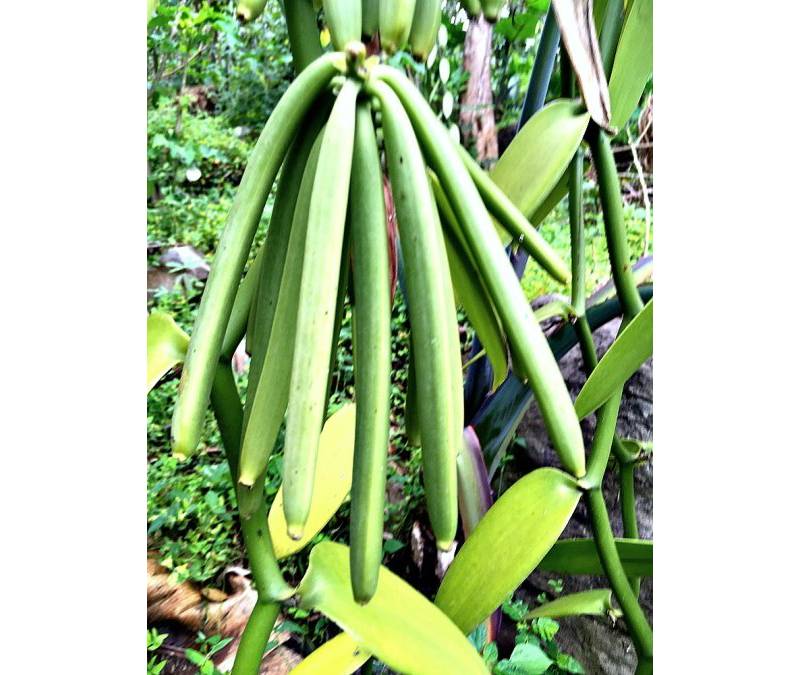Many farmers are not aware of the value of vanilla beans whose market prices range from at least Sh60,000 to Sh70,000 a kilo.Vanilla beans are reported to be the second most expensive product in the world, after saffron, due to highly labor-intensive...
Many farmers are not aware of the value of vanilla beans whose market prices range from at least Sh60,000 to Sh70,000 a kilo.
Vanilla beans are reported to be the second most expensive product in the world, after saffron, due to highly labor-intensive methods of cultivation.
One of the main reason prices get so high is because it is hard to grow vanilla beans highlights online website businessinsider.com.
They grow only in specific conditions along the equator, are pollinated by hand and are prone to theft on the farm.
Pollination
Vanilla vines take two to four years to fully mature, and their flowers only bloom on one day of the year. For the plants to produce beans, they must be pollinated that day.
Vanilla do not self-pollinate because a small flap of plant tissues called rostellum separates their male and female organs.
In most places it is grown there are no birds to pollinate the flowers thus it must be done by hand.
Vanilla beans
Vanilla orchids produce a dark brown seed pod that is then soaked in concentrated alcohol to produce the vanilla extract.
Vanilla extract is one of the main flavors for vanilla yogurts, ice cream, chocolate, cookies, tea, cakes, and perfumes.
The pods need several months to cure after harvesting.
The whole process is time-consuming and very labor-intensive.
There is a high demand for vanilla beans thus they are prone to theft from the farm.
It is also hard to trace stolen vanilla beans when mixed with other produce in the market.
After the harvested vanilla beans start drying and turning dark brown, oily and flexible, they develop a powerful and enticing fragrance that is also known to chase away insects and pests according to media reports.
Some farmers pick vanilla pods when they're green due to fear of theft or to get more vanilla quickly and quickly cure them resulting in lower-quality vanilla that fetches lower prices.
Farming
The crop is cultivated by planting cuttings known as vines.
The vines climb on existing trees and if left alone can grow upwards as high as possible producing few flowers. On the farm, workers periodically fold off the high parts of the plant downwards to make it accessible.
The vine has to be six feet in length. Between one and a half feet has to be buried horizontally in the soil at a depth of three inches.
The remaining part has to be trained on tutors which range from live plants, metal grating or other perennial crops.
The plant has no known pests as it is virtually grown organically.
The most suitable climate for vanilla is hot and humid weather with the soil slightly sandy with clay and river silts combined with organic farming methods which ensure high-quality production.
Extreme weather conditions can also damage the crop in the farm adds businessinsider.com
The scorching sun helps in post-harvest curing. From pollination, it takes vanilla six to eight months to mature and cure according to media reports.
It also requires ample water from adequate rainfall, extremely warm temperatures and manure for optimum growth.
The beach land and low altitude lake regions are however perfect for vanilla plantations to flourish?.
Agronomists say that because of the climatic specifications required for faster maturity, farmers in highland areas would need to plant the crop in greenhouses.
Farmers in Nyeri cultivate Vanilla planifolia which produces three to 10 kilograms of beans per plant.
Vanilla is harvested twice a year with a vanilla tree bearing up to 80 beans. ?
Farmers shy away from growing the crop because of the long time it takes to mature even though Kenya has the right conditions for its cultivation with ready market locally and export, notes farmbizafrica.com.
There are two species of vanilla sold commercially as quoted in media reports namely Vanilla pantifolia also known as V. fragrans and Vanilla pompona schiede.
A third edible species known as Vanilla tahitensis is believed to have originated by crossing V. planifolia and V. pompona stock in a laboratory.
Original source: Stanadrd Digital (Farmers.co.ke)




